One of my favorite quilts in Heritage Frederick’s collection is this triple Irish chain pattern quilt with an unique appliqued oak leaf and acorn border. Although the object is over 160 years old, it is in amazing condition. The material is not faded, yellowed, stained, or deteriorating. The whites and colors are crisp and the hand-stitching and quilting are expert level and very intricate. The quilt also has an amazing story, which is always my favorite aspect of any artifact. This story is about a young woman named Eliza Ann Webb who came to Frederick County just before the outbreak of the Civil War.
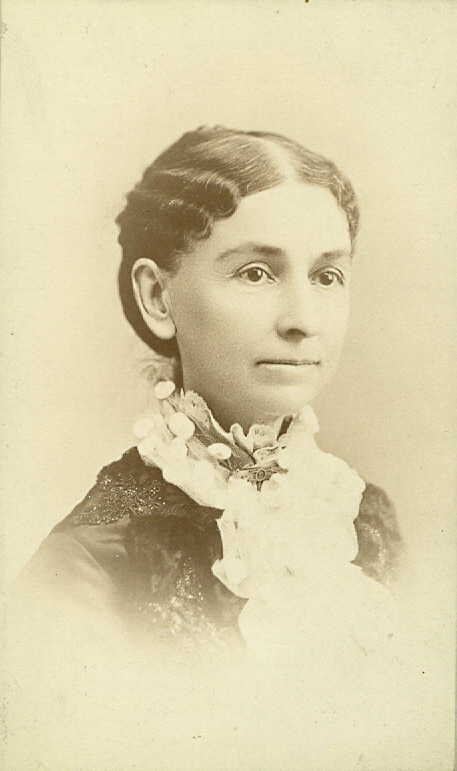
Eliza was born in 1834 in Cazenovia, New York, located about 20 miles Southeast of Syracuse; she was the eldest daughter of master carpenter and joiner David Baldwin Webb and his wife, Elvira Olivia Gage. In 1857, Eliza suffered from ill health, and she took the advice of others who suggested she move south to get a change in climate. At the age of 23, she came to Frederick County where she got a job teaching at the seminary in Liberty (now Libertytown). The following year Eliza started teaching the youngest children of John and Ann Gore Kinzer of Johnsville. John Kinzer was a local merchant, and during the time that Eliza spent in their home Ann was engaged in making this intricately patterned, red and green quilt.
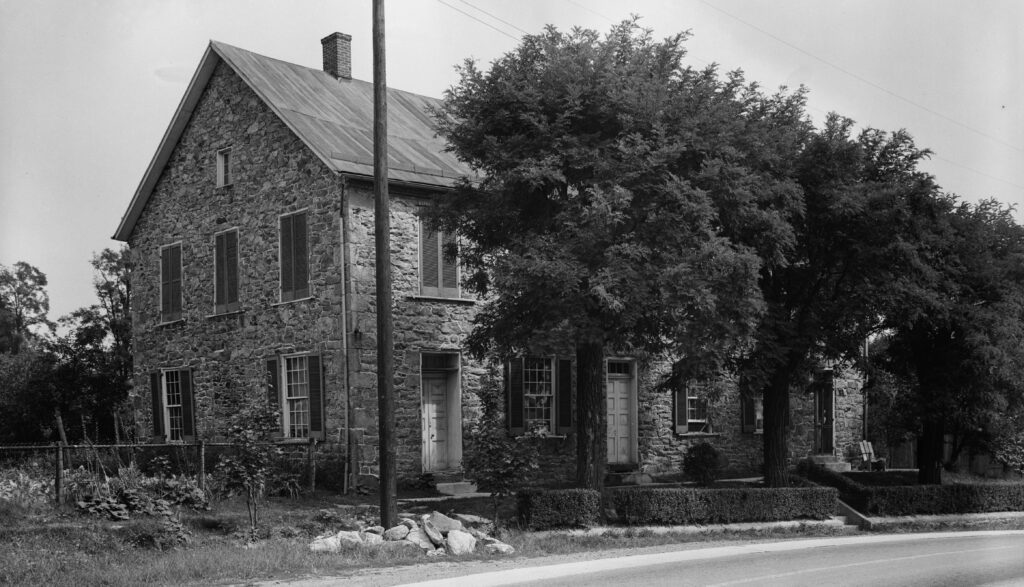
The Libertytown Seminary building, from the Historic American Buildings Survey, Library of Congress
As political tensions escalated across the nation in advance of the 1860 presidential election, Eliza decided to return home to New York. The Webb family’s hometown of Cazenovia was considered to be the abolitionist headquarters of the country, in part because it hosted the Fugitive Slave Law Convention in August of 1850. Once back home, Eliza began trying to replicate the red and green quilt she had seen Ann Kinzer making. Her diary tells us that she also received letters from a Mr. Milton Urner, whom she met and fell in love with during her stay in Liberty, but the relationship soon ended. Eliza, along with her younger sister Mary, continued to teach in Cazenovia throughout the Civil War. At the end of the 1860s, Eliza became the second wife of Mills P. Pharis, a salt manufacturer from Geddes, New York, whose first wife died following the birth of their third son. Eliza and Mills had one child, a daughter named Mary Pharis, born in 1871.
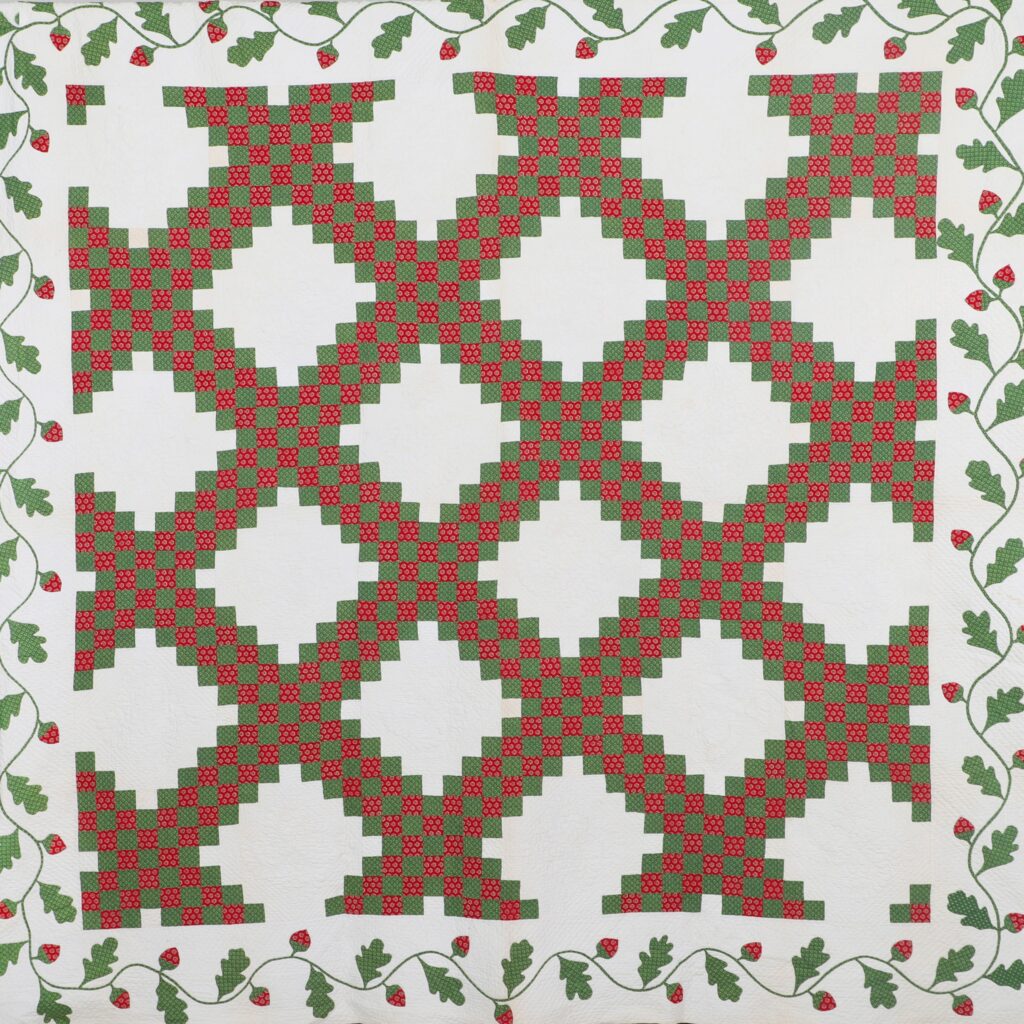
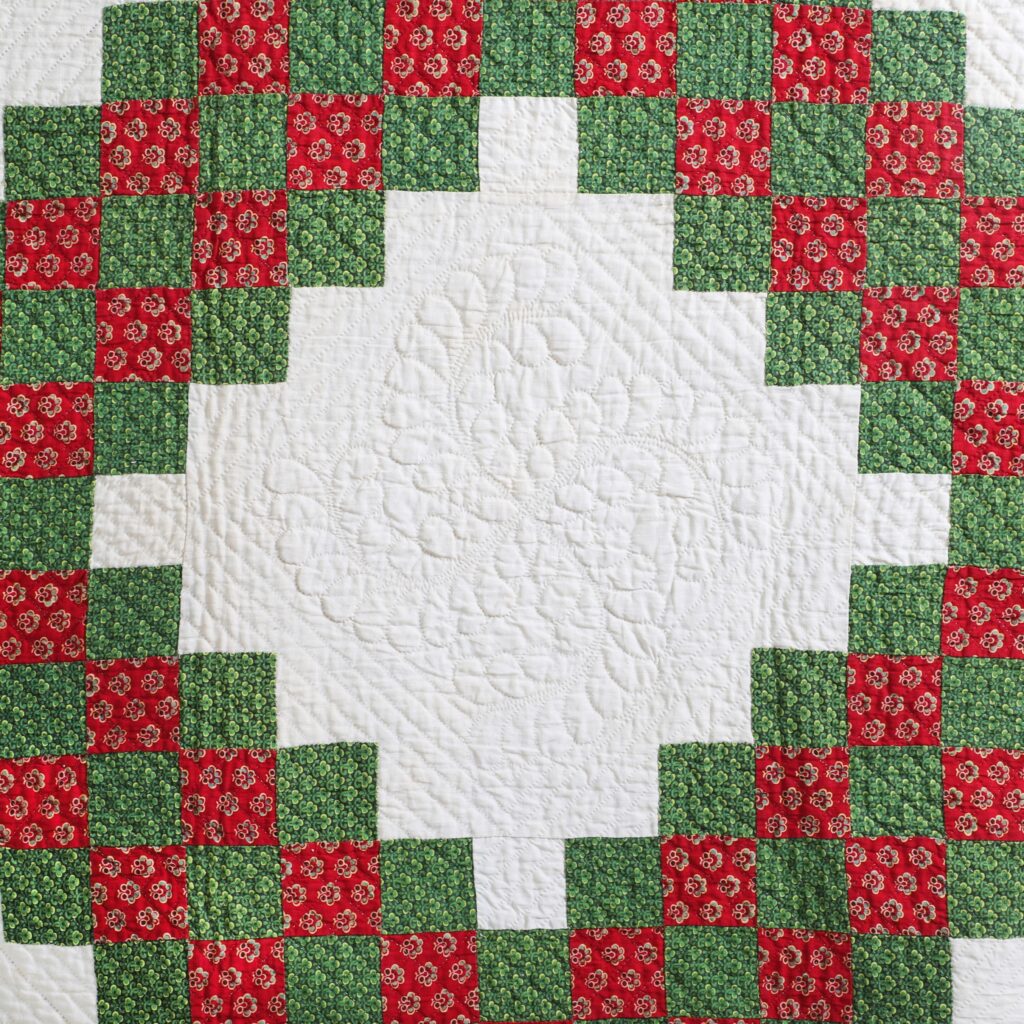
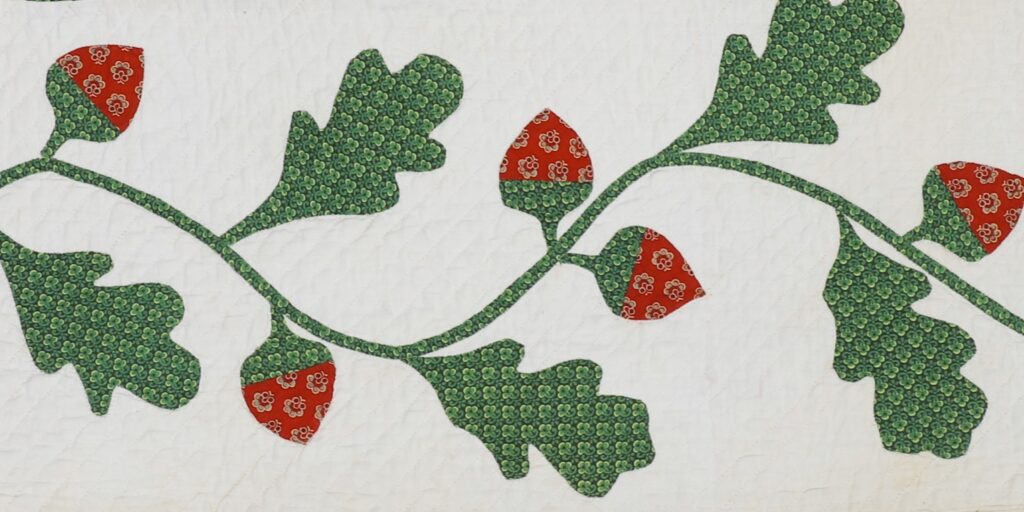
At some point after Ann Kinzer completed her own quilt, she sent it as a gift to Eliza. The quilt’s sustained beauty and perfect condition make plain the gift remained a treasured memory for generations of a time and place – and person. Ann’s quilt and its replica, made by Eliza, were passed down together through the family to Eliza’s granddaughter, Katherine Salisbury Hazen, who donated the Johnsville quilt to Heritage Frederick in 1973.
November 9, 2023 by Amy Hunt, Heritage Frederick Curator
